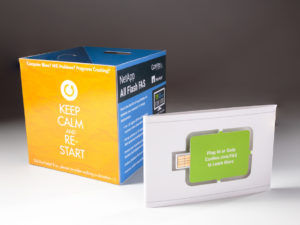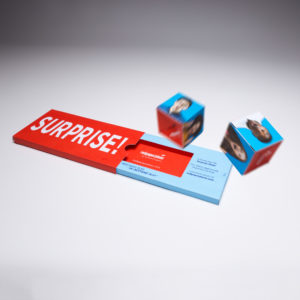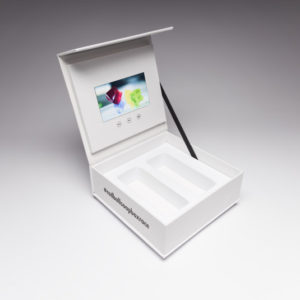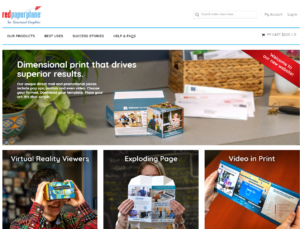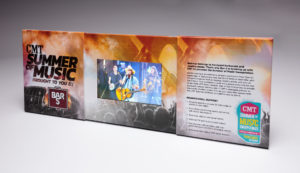It may only be fall, but already we’ve got the holidays on the brain.
Year after year, it seems the holiday shopping period grows, giving brands greater opportunities to take advantage of consumers’ willingness to purchase products, services and more. But don’t be tempted to allocate the majority of your marketing resources to Black Friday and Cyber Monday.
New U.S. research has revealed key information about holiday shoppers’ behavior. Not only are they shopping earlier, but they’re also researching a product, brand or service before making any financial investment. Now, more than ever, it’s crucial to be there for them consistently and earlier in the season.
In this recent Think with Google article, they break down the four different types of holiday shoppers – Evergreen, Early Bird, Deal Seeker and Last-Minute – and provide insights into how they shop. We’ve gone one step further to suggest ways to market to them based upon those habits and give you the best chance to connect with them during the holiday season.
Here’s how to make the most of the most wonderful time of the year.
THE EVERGREEN SHOPPER
- Who: Making up the largest portion of holiday consumers, the Evergreen Shopper is likely a Baby Boomer seeking convenience, simplicity and exemplary customer service. This audience generally offers brands more loyalty when compared with other holiday shopper groups.
- When: Late October through January 1
- Where: The Evergreen Shopper typically conducts their research online, including on social media and video sharing platforms, but makes their purchases in-store.
- How: To ensure you’re meeting the Evergreen Shopper’s needs, consider really playing up your customer service. Things like 24/7 call centers, in-store pick ups and no-hassle returns can really go far with this group. Because they’re receptive to both online and offline research and shopping, consider incorporating direct mail pieces like web keys, which can link both in a seamless way.
THE EARLY BIRD
- Who: making up slightly more than a quarter of total holiday consumers, the Early Bird Shopper is also likely a Baby Boomer who strategically plans ahead, hoping to avoid the holiday rush.
- When: October (or earlier) through November 26
- Where: About 40 percent of the Early Bird’s time spent shopping for the holidays is spent online. However, about 65 percent make their holiday purchases in-store.
- How: To get the attention of Early Bird Shoppers, it’s essential to develop an omnichannel solution that’s both engaging and valuable. Consider incorporating QR codes, web keys and video brochures into your holiday marketing campaigns. But, above all, keep your messaging consistent and send it early.
THE DEAL SEEKER
- Who: The Deal Seekers make up the smallest group of holiday shoppers. These are mostly Millennials and a small percentage of Gen Xers who are searching for the steepest discounts and during days like Black Friday and Cyber Monday. They are likely shopping for partners, children (their own or their friends’) and aging relatives who live within their households.
- When: November 23-26
- Where: This digital savvy group of holiday shoppers conducts online research across a variety of websites and rely heavily on social media influencers’ recommendations. Deal Seekers actively look for real consumers offering their authentic opinions on products.
- How: With 82 percent of Deal Seekers admitting that word-of-mouth recommendations greatly influence their purchasing decisions, it’s crucial to incorporate testimonials and/ or social media influencers into your holiday marketing campaigns. Another way to take advantage of Deal Seekers’ shopping behavior is to turn them into brand advocates through shareable elements in and out of a brick-and-mortar store. Incorporate virtual reality, digital signage or pop ups to create experiences this group of holiday shoppers will want to share online and with their friends.
THE LAST-MINUTE SHOPPER
- Who: The Last-Minute Shopper group is equally split between Millennials and Gen Xers. Like the Deal Seekers, these procrastinators actively seek out comparison sites to ensure they receive the best value for their money, but are willing to splurge on items they view as worth the cost. They procrastinate because they have decision paralysis, are too busy or are unsure of where to buy certain products.
- When: December 21-25
- Where: Nearly 70 percent of Last-Minute Shoppers purchase their holiday gifts in store.
- How: More than half of Last-Minute Shoppers indicated an openness to multiple retailers or an uncertainty regarding where to buy products. This creates an opportunity for brands to position themselves as industry experts. Blog posts, a solid SEO strategy, social media buzz and consistent online and offline marketing will help position your business as a knowledgeable leader in your industry and help you rank higher in search rankings, keeping you top-of-mind.
Ready to get started on your holiday campaign? We have a few tricks up our sleeves that will help you stand out from the pack and keep you top of mind, no matter what kind of holiday shopper you’re after. Let’s chat.
